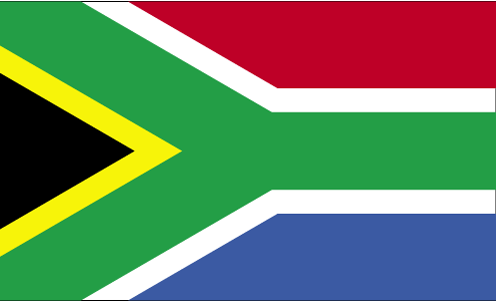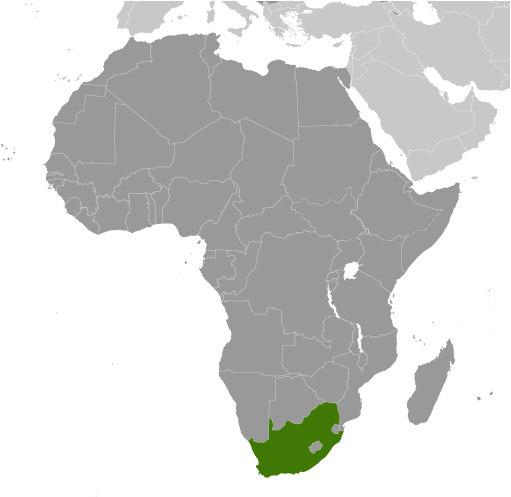
|
|
Advertisements:
EconomyEconomy - overview
South Africa is a middle-income, emerging market with an abundant supply of natural resources; well-developed financial, legal, communications, energy, and transport sectors; a stock exchange that is the 18th largest in the world; and modern infrastructure supporting a relatively efficient distribution of goods to major urban centers throughout the region. Growth was robust from 2004 to 2007 as South Africa reaped the benefits of macroeconomic stability and a global commodities boom but began to slow in the second half of 2007 due to an electricity crisis and the subsequent global financial crisis' impact on commodity prices and demand. GDP fell nearly 2% in 2009 but recovered in 2010-11. Unemployment remains high and outdated infrastructure has constrained growth. State power supplier Eskom encountered problems with aging plants and meeting electricity demand necessitating "load-shedding" cuts in 2007 and 2008 to residents and businesses in the major cities. Daunting economic problems remain from the apartheid era - especially poverty, lack of economic empowerment among the disadvantaged groups, and a shortage of public transportation. South Africa''s economic policy is fiscally conservative focusing on controlling inflation and attaining a budget surplus. The current government largely follows these prudent policies but must contend with the impact of the global crisis and is facing growing pressure from special interest groups to use state-owned enterprises to deliver basic services to low-income areas and to increase job growth. Gdp (purchasing power parity) World Ranking: 26
$562.2 billion (2011 est.)
$545.1 billion (2010 est.) $529.8 billion (2009 est.) Note Data are in 2011 US dollars Gdp (official exchange rate)
$408.1 billion (2011 est.)
Gdp - real growth rate World Ranking: 119
3.1% (2011 est.)
2.9% (2010 est.) -1.5% (2009 est.) Gdp - per capita (ppp) World Ranking: 105
$11,100 (2011 est.)
$10,900 (2010 est.) $10,700 (2009 est.) Note Data are in 2011 US dollars Gdp - composition by sector
Agriculture 2.5%
Industry 31.6% Services 65.9% (2011 est.) Labor force World Ranking: 35
17.66 million (2011 est.)
Labor force - by occupation
Agriculture 9%
Industry 26% Services 65% (2007 est.) Unemployment rate World Ranking: 173
24.9% (2011 est.)
24.9% (2010 est.) Population below poverty line
50% (2000 est.)
Household income or consumption by percentage share
Lowest 10% 1.2%
Highest 10% 51.7% (2009 est.) Distribution of family income - gini index World Ranking: 2
65 (2005)
59.3 (1994) Investment (gross fixed) World Ranking: 113
18.4% of GDP (2011 est.)
Budget
Revenues $102.8 billion
Expenditures $118.3 billion (2011 est.) Taxes and other revenues World Ranking: 126
25.2% of GDP (2011 est.)
Budget surplus (+) or deficit (-) World Ranking: 120
-3.8% of GDP (2011 est.)
Public debt World Ranking: 102
34.1% of GDP (2011 est.)
33.5% of GDP (2010 est.) Inflation rate (consumer prices) World Ranking: 126
5% (2011 est.)
4.1% (2010 est.) Central bank discount rate World Ranking: 21
7% (31 December 2009)
11.5% (31 December 2008) Commercial bank prime lending rate World Ranking: 97
9% (31 December 2011 est.)
9.833% (31 December 2010 est.) Stock of narrow money World Ranking: 30
$117.3 billion (31 December 2011 est.) $131 billion (31 December 2010 est.) Stock of broad money World Ranking: 35
$277 billion (31 December 2011 est.) $263.9 billion (31 December 2009 est.) Stock of domestic credit World Ranking: 35
$324.4 billion (31 December 2011 est.) $339.9 billion (31 December 2010 est.) Market value of publicly traded shares World Ranking: 16
$855.7 billion (31 December 2011) $1.013 trillion (31 December 2010) $704.8 billion (31 December 2009) Agriculture - products
Corn, wheat, sugarcane, fruits, vegetables; beef, poultry, mutton, wool, dairy products Industries
Mining (world's largest producer of platinum, gold, chromium), automobile assembly, metalworking, machinery, textiles, iron and steel, chemicals, fertilizer, foodstuffs, commercial ship repair Industrial production growth rate World Ranking: 112
2.5% (2011 est.)
Electricity - production World Ranking: 15
238.3 billion kWh (2008 est.)
Electricity - consumption World Ranking: 17
212.2 billion kWh (2008 est.)
Electricity - exports
14.05 billion kWh (2009 est.)
Electricity - imports
1.757 billion kWh (2009 est.)
Oil - production World Ranking: 42
192,100 bbl/day (2010 est.)
Oil - consumption World Ranking: 32
553,000 bbl/day (2010 est.)
Oil - exports World Ranking: 75
54,930 bbl/day (2009 est.)
Oil - imports World Ranking: 23
521,400 bbl/day (2009 est.)
Oil - proved reserves World Ranking: 85
15 million bbl (1 January 2011 est.) Natural gas - production World Ranking: 57
1.9 billion cu m (2009 est.)
Natural gas - consumption World Ranking: 58
5.4 billion cu m (2009 est.)
Natural gas - exports World Ranking: 182
0 cu m (2009 est.)
Natural gas - imports World Ranking: 39
3.5 billion cu m (2009 est.)
Natural gas - proved reserves World Ranking: 103
27.16 million cu m (1 January 2006 est.) Current account balance World Ranking: 178
-$13.34 billion (2011 est.)
-$10.12 billion (2010 est.) Exports World Ranking: 38
$104.5 billion (2011 est.)
$85.7 billion (2010 est.) Exports - commodities
Gold, diamonds, platinum, other metals and minerals, machinery and equipment Exports - partners
China 15.8%, US 9.5%, Japan 8.2%, India 8%, Germany 6.9%, UK 4% (2011) Imports World Ranking: 33
$102.6 billion (2011 est.)
$81.86 billion (2010 est.) Imports - commodities
Machinery and equipment, chemicals, petroleum products, scientific instruments, foodstuffs Imports - partners
China 13.3%, Germany 10.4%, US 7.2%, Saudi Arabia 5.4%, Iran 4.4%, Japan 4.3%, UK 4.2% (2011) Reserves of foreign exchange and gold World Ranking: 37
$48.87 billion (31 December 2011 est.) $43.83 billion (31 December 2010 est.) Debt - external World Ranking: 60
$46.07 billion (31 December 2011 est.) $45.16 billion (31 December 2010 est.) Stock of direct foreign investment - at home World Ranking: 25
$159 billion (31 December 2011 est.) $153.1 billion (31 December 2010 est.) Stock of direct foreign investment - abroad World Ranking: 28
$89.96 billion (31 December 2011 est.) $89.45 billion (31 December 2010 est.) Exchange rates
Rand (ZAR) per US dollar -
7.2611 (2011 est.) 7.3212 (2010 est.) 8.42 (2009) 7.9576 (2008) 7.05 (2007) Fiscal year
1 April - 31 March
Comments
Add a new comment: |
Advertisement
Members area
South Africa (Pretoria):
 
GPS points from South Africa (Pretoria)
|
||||||||

 Dutch traders landed at the southern tip of modern day South Africa in 1652 and established a stopover point on the spice route between the Netherlands and the Far East, founding the city of Cape Town. After the British seized the Cape of Good Hope area in 1806, many of the Dutch settlers (the Boers) trekked north to found their own republics. The discovery of diamonds (1867) and gold (1886) spurred wealth and immigration and intensified the subjugation of the native inhabitants. The Boers resisted British encroachments but were defeated in the Boer War (1899-1902); however, the British and the Afrikaners, as the Boers became known, ruled together beginning in 1910 under the Union of South Africa, which became a republic in 1961 after a whites-only referendum. In 1948, the National Party was voted into power and instituted a policy of apartheid - the separate development of the races - which favored the white minority at the expense of the black majority. The African National Congress (ANC) led the opposition to apartheid and many top ANC leaders, such as Nelson MANDELA, spent decades in South Africa's prisons. Internal protests and insurgency, as well as boycotts by some Western nations and institutions, led to the regime's eventual willingness to negotiate a peaceful transition to majority rule. The first multi-racial elections in 1994 brought an end to apartheid and ushered in majority rule under an ANC-led government. South Africa since then has struggled to address apartheid-era imbalances in decent housing, education, and health care. ANC infighting, which has grown in recent years, came to a head in September 2008 when President Thabo MBEKI resigned, and Kgalema MOTLANTHE, the party's General-Secretary, succeeded him as interim president. Jacob ZUMA became president after the ANC won general elections in April 2009. In January 2011, South Africa assumed a nonpermanent seat on the UN Security Council for the 2011-12 term.
Dutch traders landed at the southern tip of modern day South Africa in 1652 and established a stopover point on the spice route between the Netherlands and the Far East, founding the city of Cape Town. After the British seized the Cape of Good Hope area in 1806, many of the Dutch settlers (the Boers) trekked north to found their own republics. The discovery of diamonds (1867) and gold (1886) spurred wealth and immigration and intensified the subjugation of the native inhabitants. The Boers resisted British encroachments but were defeated in the Boer War (1899-1902); however, the British and the Afrikaners, as the Boers became known, ruled together beginning in 1910 under the Union of South Africa, which became a republic in 1961 after a whites-only referendum. In 1948, the National Party was voted into power and instituted a policy of apartheid - the separate development of the races - which favored the white minority at the expense of the black majority. The African National Congress (ANC) led the opposition to apartheid and many top ANC leaders, such as Nelson MANDELA, spent decades in South Africa's prisons. Internal protests and insurgency, as well as boycotts by some Western nations and institutions, led to the regime's eventual willingness to negotiate a peaceful transition to majority rule. The first multi-racial elections in 1994 brought an end to apartheid and ushered in majority rule under an ANC-led government. South Africa since then has struggled to address apartheid-era imbalances in decent housing, education, and health care. ANC infighting, which has grown in recent years, came to a head in September 2008 when President Thabo MBEKI resigned, and Kgalema MOTLANTHE, the party's General-Secretary, succeeded him as interim president. Jacob ZUMA became president after the ANC won general elections in April 2009. In January 2011, South Africa assumed a nonpermanent seat on the UN Security Council for the 2011-12 term.